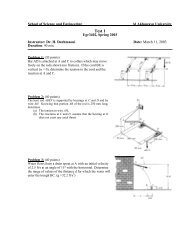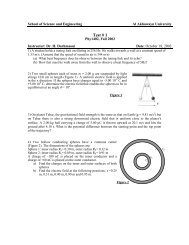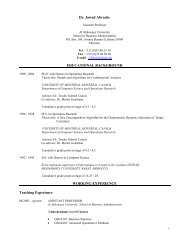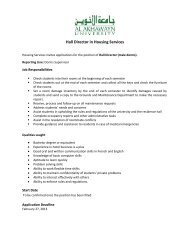Leadership and Values in Language Education - Al Akhawayn ...
Leadership and Values in Language Education - Al Akhawayn ...
Leadership and Values in Language Education - Al Akhawayn ...
- No tags were found...
You also want an ePaper? Increase the reach of your titles
YUMPU automatically turns print PDFs into web optimized ePapers that Google loves.
63Proceed<strong>in</strong>gs of the 27 th MATE Annual Conferencegoal. In short, leadership is the capacity to translate vision <strong>in</strong>to reality (Bennis,op.cit.).2. <strong>Leadership</strong> <strong>and</strong> Management<strong>Leadership</strong> is closely l<strong>in</strong>ked to the idea of management. No one can deny the factthat they are quite two different but complementary functions <strong>in</strong> education. Theyare <strong>in</strong> ‘free variation’ but they are <strong>in</strong> ‘complementary distribution’. There is ageneral agreement among researchers that there is a reciprocal relationshipbetween, needless to say, leadership <strong>and</strong> management, that is, an effectivemanager must have leadership skills, <strong>and</strong> an effective leader must havemanagement skills. (Bennis, 1989; Williams-Boyd, 2002).Management is a process that is used to accomplish organizational goals; that is,a process that is used to achieve what an educational <strong>in</strong>stitution wants to achieve.The key elements of management are (a) plann<strong>in</strong>g, (b) organiz<strong>in</strong>g, (c) direct<strong>in</strong>g,<strong>and</strong> (d) controll<strong>in</strong>g. Some would <strong>in</strong>clude lead<strong>in</strong>g as a manag<strong>in</strong>g function(Williams-Boyd, 2002). It is worth po<strong>in</strong>t<strong>in</strong>g out that conditions imposed onmanagement are relaxed <strong>in</strong> comparison with leadership. Management is about“do<strong>in</strong>g th<strong>in</strong>gs right”, that is, work<strong>in</strong>g <strong>in</strong> a given paradigm to: “make th<strong>in</strong>gs better(Lick, 2002). <strong>Leadership</strong>, on the other h<strong>and</strong>, is “do<strong>in</strong>g the right th<strong>in</strong>g”, that is,shift<strong>in</strong>g a paradigm from “what is” to “what should be.” “Management isefficiency <strong>in</strong> climb<strong>in</strong>g the ladder of success; leadership determ<strong>in</strong>es whether theladder is lean<strong>in</strong>g aga<strong>in</strong>st the right wall” Stephen R. Covey. Elsewhere, Covey(1990) writes: the leader is the one who climbs the tallest tree, surveys thesituation, <strong>and</strong> yells, ‘Wrong jungle!’ But how do busy, efficient faculty,adm<strong>in</strong>istrators, <strong>and</strong> staff often respond? “Shut up! We’re mak<strong>in</strong>g progress!” Thedist<strong>in</strong>ction between leadership <strong>and</strong> management is best illustrated <strong>in</strong> thefollow<strong>in</strong>g table:Management<strong>Leadership</strong>Plann<strong>in</strong>g <strong>and</strong> budg<strong>in</strong>gSett<strong>in</strong>g a directionOrganiz<strong>in</strong>g <strong>and</strong> staff<strong>in</strong>g <strong>Al</strong>ign<strong>in</strong>g peopleControll<strong>in</strong>g <strong>and</strong> problem solv<strong>in</strong>g Motivat<strong>in</strong>g <strong>and</strong> <strong>in</strong>spir<strong>in</strong>gDoma<strong>in</strong> of leaders is the futureSignificant contributions are madeto the long term developmentAdapted from Kotter (1998 cited <strong>in</strong> Lick, 2002:33)
















